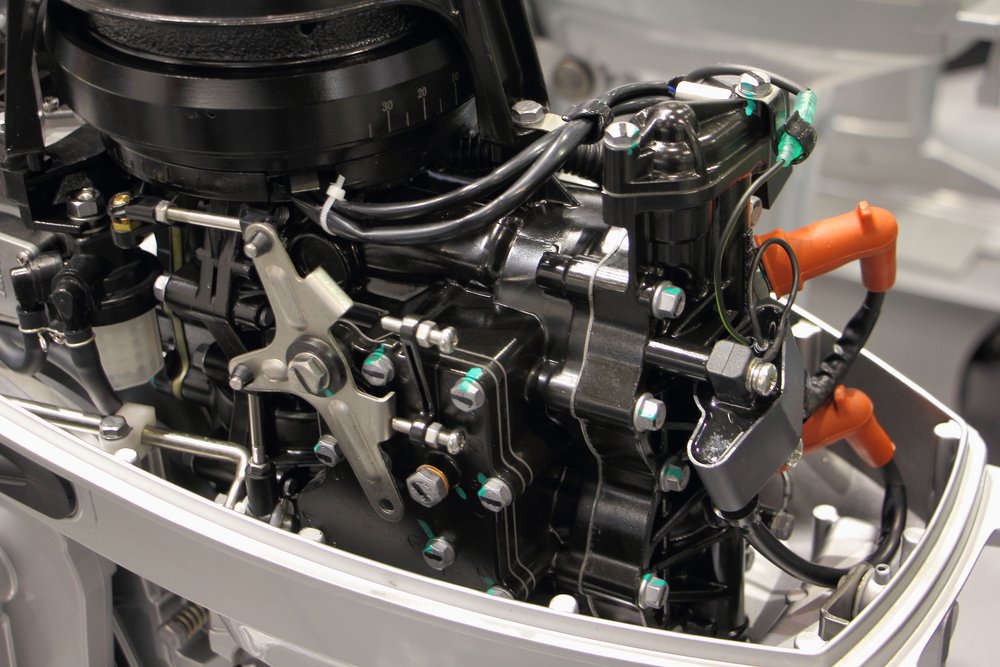
The combustion cycle used to be simply a matter of how many strokes were needed to complete it. The answer was two, hence 2-stroke outboard engines, or four, hence 4-stroke.
For many years, it was assumed that 2-strokes would always be more potent than their 4-stroke counterparts. However, this is not necessarily true in today’s world, where we have to consider performance, fuel efficiency, and noise levels.
Performance
You cannot beat a two-stroke outboard engine because of sheer brute power on the water. They are more powerful and faster than four strokes for their size and weight. This is because they have fewer moving parts, so there’s less friction to rob them of power and speed.
Two-strokes also have higher compression ratios, meaning they can produce more energy per unit volume than four strokes – hence why they’re called high output engines! The downside is that they consume a lot more fuel than their modern-day rivals, up to 50% in some instances, like running at high revs or idling with no load (boat underway).
The reality is that most boaters don’t need all this extra power from an outboard engine unless they’re competing in races where every second counts.
So we can understand why manufacturers like Honda Marine would say, “Don’t worry about losing any muscle.”
When describing their BF200A4 model over its predecessor, which uses 20% less fuel despite being 3x lighter than Yamaha’s equivalent four-stroke F200BETU engine available for purchase online through OutboardCo com – look how much smaller it looks too!
Performance should be your top priority if you want an outboard engine that will give you better acceleration off the dock while still reaching speeds up to 30 miles per hour.
Depending on boat size & weight capacity, without burning too much gas without sacrificing.
Performance
Two-stroke outboards are more potent than four-strokes, so if speed is essential to you, opt for a two-stroke model. It will also be more responsive and accessible to handle in tight spaces than its larger cousin. However, two-strokes tend to be less fuel-efficient than fours.
If you want the best of both worlds—performance and economy—then we recommend sticking with the tried four-stroke outboard motor (which also happens to be easier on the wallet).
If you are someone who can’t afford constant repairs or replacements, however, then, by all means, save yourself some hassle by going with a two-stroke!
Environmental impact
Outboard motors with two-strokes burn more fuel than those with four-strokes. This is because the latter has fewer moving parts and requires less oil. The increased power of a four-stroke also means it can tackle complex jobs easily, saving time and money.
The emissions from 2-stroke engines are much greater than those of 4-stroke engines, as they produce more carbon monoxide and hydrocarbons during combustion. In addition, some two-stroke motors release unburned fuel into the exhaust, making them even more polluting than their larger counterparts.
These environmental problems mean that many people choose to use four-stroke outboard motors instead of 2 strokes if they want an environmentally friendly product that is easy to maintain and efficient in operation too!
Engine noise
The noise made by a two-stroke engine is much louder than that of a four-stroke. This is because it depends on the propeller’s exhaust and rotational speed. The higher you rev your outboard, the louder it will be.
A two-stroke outboard has a high initial purchase price and poor reliability. However, it offers superior performance. A four-stroke outboard engine is quiet and reliable and is better for the environment but has inferior performance.
Which one is better? Outboard motors come in two types. However, the comparison isn’t as simple as it might seem.
The two-stroke and four-stroke engines are very different from each other. Fuel and oil are used in two-stroke engines to lubricate themselves; oil is the sole lubricant in four-stroke engines.
It means you should never operate a two-stroke engine in salt water. Then it will require regular maintenance due to corrosion caused by the saltwater environment on its internal components, such as pistons and cylinder walls leading to reduced longevity compared with a four-stroke engine running in freshwater (with no corrosion problems).
Conclusion
So there you have it. The two-stroke outboard engine is the clear winner when it comes to performance. Unfortunately, it has poor reliability and is not good for the environment. You can buy cheap outboard motor by searching on internet used outboard motors for sale.
If you want a machine that is good for the environment and reliable but doesn’t perform as well, then opt for a four-stroke motor.



